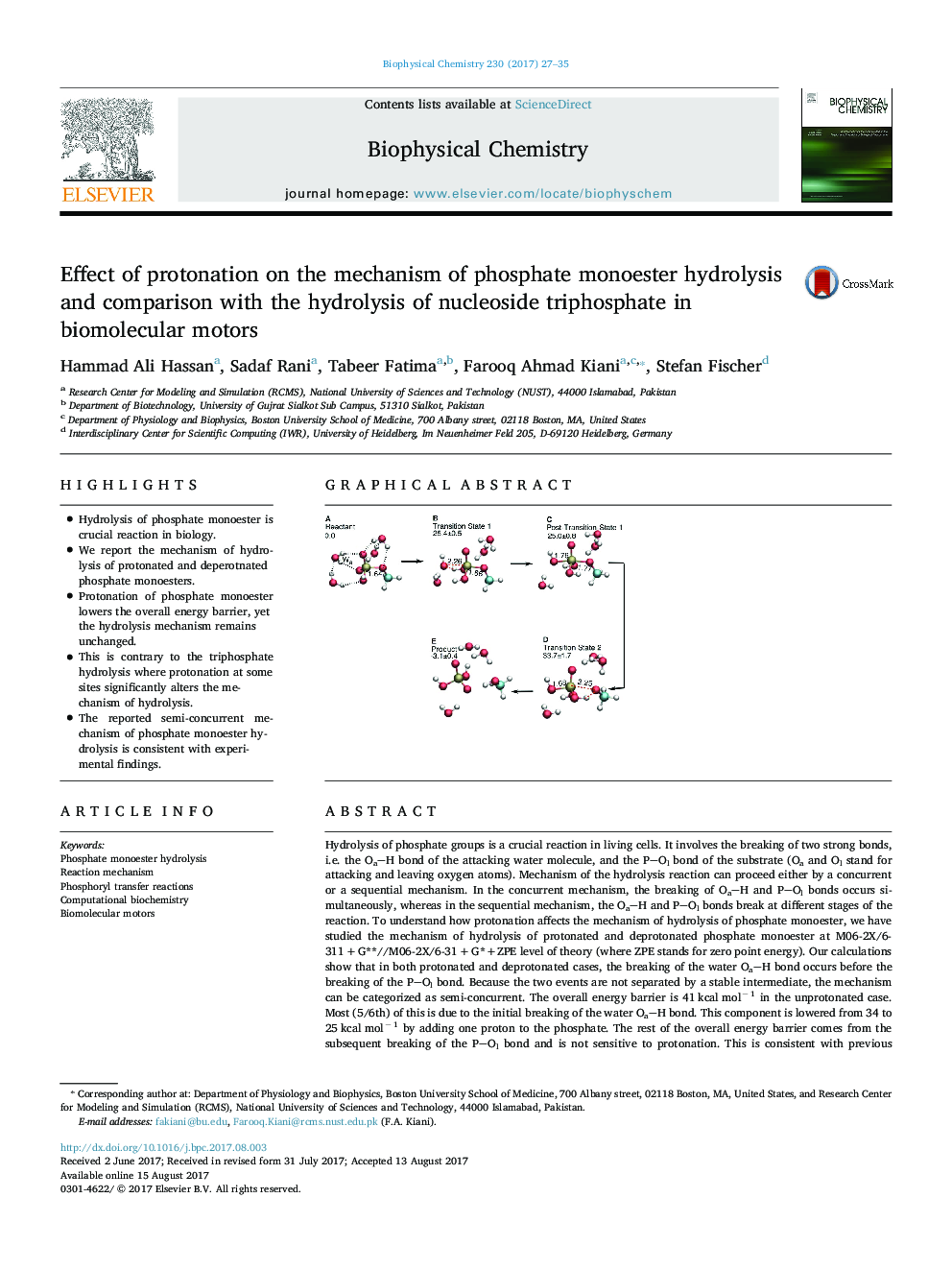| کد مقاله | کد نشریه | سال انتشار | مقاله انگلیسی | نسخه تمام متن |
|---|---|---|---|---|
| 5370571 | 1503890 | 2017 | 9 صفحه PDF | دانلود رایگان |
- Hydrolysis of phosphate monoester is crucial reaction in biology.
- We report the mechanism of hydrolysis of protonated and deperotnated phosphate monoesters.
- Protonation of phosphate monoester lowers the overall energy barrier, yet the hydrolysis mechanism remains unchanged.
- This is contrary to the triphosphate hydrolysis where protonation at some sites significantly alters the mechanism of hydrolysis.
- The reported semi-concurrent mechanism of phosphate monoester hydrolysis is consistent with experimental findings.
Hydrolysis of phosphate groups is a crucial reaction in living cells. It involves the breaking of two strong bonds, i.e. the OaH bond of the attacking water molecule, and the POl bond of the substrate (Oa and Ol stand for attacking and leaving oxygen atoms). Mechanism of the hydrolysis reaction can proceed either by a concurrent or a sequential mechanism. In the concurrent mechanism, the breaking of OaH and POl bonds occurs simultaneously, whereas in the sequential mechanism, the OaH and POl bonds break at different stages of the reaction. To understand how protonation affects the mechanism of hydrolysis of phosphate monoester, we have studied the mechanism of hydrolysis of protonated and deprotonated phosphate monoester at M06-2X/6-311 + G**//M06-2X/6-31 + G*+ZPE level of theory (where ZPE stands for zero point energy). Our calculations show that in both protonated and deprotonated cases, the breaking of the water OaH bond occurs before the breaking of the POl bond. Because the two events are not separated by a stable intermediate, the mechanism can be categorized as semi-concurrent. The overall energy barrier is 41 kcal molâ 1 in the unprotonated case. Most (5/6th) of this is due to the initial breaking of the water OaH bond. This component is lowered from 34 to 25 kcal molâ 1 by adding one proton to the phosphate. The rest of the overall energy barrier comes from the subsequent breaking of the POl bond and is not sensitive to protonation. This is consistent with previous findings about the effect of triphosphate protonation on the hydrolysis, where the equivalent protonation (on the γ-phosphate) was seen to lower the barrier of breaking the water OaH bond and to have little effect on the POl bond breaking. Hydrolysis pathways of phosphate monoester with initial breaking of the POl bond could not be found here. This is because the leaving group in phosphate monoester cannot be protonated, unlike in triphosphate hydrolysis, where protonation of the β- and γ-phosphates had been shown to promote a mechanism where the POl bond breaks before the OaH bond does. We also point out that the charge shift due to POl bond breaking during sequential ATP hydrolysis in bio-molecular motors onsets the week unbinding of hydrolysis product that finally leads to the product release during power stroke.
144
Journal: Biophysical Chemistry - Volume 230, November 2017, Pages 27-35
